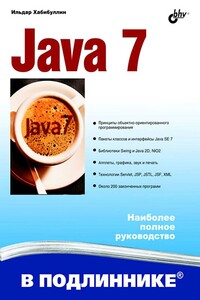Энциклопедия разработчика модулей ядра Linux | страница 12
Причина по которой мы используем proc_register_dynamic[2] в том, что мы не хотим определять inode номер, используемый для нашего файла заранее, но позволяем ядру определять его, чтобы предотвратить столкновения. В нормальных файловых системах размещенных на диске, а не только в памяти (как /proc) inode является указателем на то место, в котором на диске размещен индексный узел файла (кратко, inode). Inode содержит информацию относительно файла, например разрешения файла, вместе с указателем на то место, где могут быть найдены данные файла.
Поскольку никаких наших функций не вызывается когда файл открывается или закрывается, некуда поместить MOD_INC_USE_COUNT и MOD_DEC_USE_COUNT в этом модуле, и если файл открыт и затем модуль удален, не имеется никакого способа избежать проблем. В следующей главе мы рассмотрим более тяжелый в реализации, но более гибкий путь имеющий дело с файлами из /proc, который позволит нам защититься от этой проблемы.
>/* procfs.c - create a "file" in /proc
>* Copyright (C) 1998-1999 by Ori Pomerantz
>*/
>/* The necessary header files */
>/* Standard in kernel modules */
>#include
>#include
>/* Deal with CONFIG_MODVERSIONS */
>#if CONFIG_MODVERSIONS==1
>#define MODVERSIONS
>#include
>#endif
>/* Necessary because we use the proc fs */
>#include
>/* In 2.2.3 /usr/include/linux/version.h includes a
>* macro for this, but 2.0.35 doesn't - so I add it
>* here if necessary. */
>#ifndef KERNEL_VERSION
>#define KERNEL_VERSION(a,b,c) ((a)*65536+(b)*256+(c))
>#endif
>/* Put data into the proc fs file.
> Arguments
> =========
> 1. The buffer where the data is to be inserted, if you decide to use it.
> 2. A pointer to a pointer to characters. This is useful if you don't want to use the buffer allocated by the kernel.
> 3. The current position in the file.
> 4. The size of the buffer in the first argument.
> 5. Zero (for future use?).
>Usage and Return Value
> ======================
> If you use your own buffer, like I do, put its location in the second argument and return the number of bytes used in the buffer.
> A return value of zero means you have no further information at this time (end of file). A negative return value is an error condition.
> For More Information
> ====================
> The way I discovered what to do with this function wasn't by reading documentation, but by reading the code which used it. I just looked to see what uses the get_info field of proc_dir_entry struct (I used a combination of find and grep, if you're interested), and I saw that it is used in


